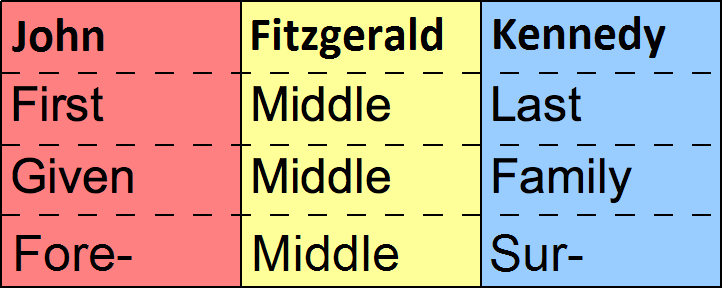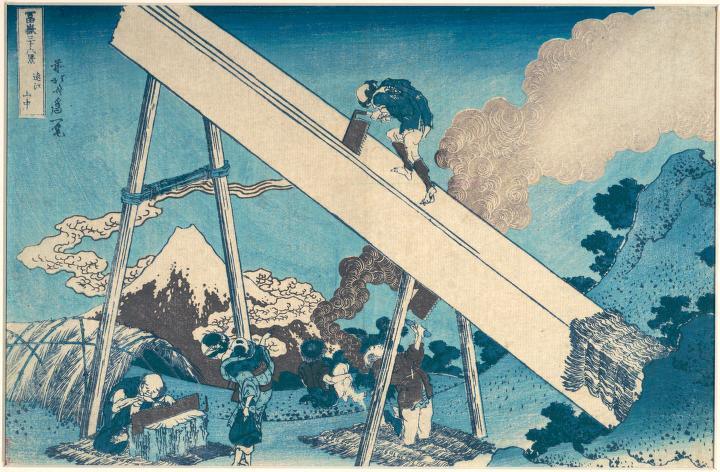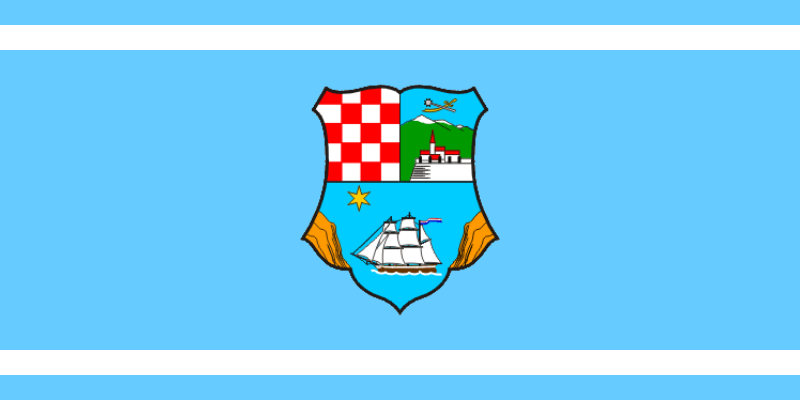|
é§agar (surname)
é§agar is a Slovene and Croatian surname, an occupational surname, it is a Slavicized version of German ''SûÊger'' meaning sawyer. It is the 24th most popular surname in Slovenia, and is borne by 2,805 individuals. In Croatia, it is borne by 1,619 individuals, and it is traditionally found in Gorski Kotar and Meáimurje, and was first mentioned in 1570 in áabar, where it is also one of the most numerous surnames today. Ethnographically, it is autochthonously Carniolan. It may refer to: * Luka é§agar, Slovenian ice hockey player *Matej é§agar, Slovenian motorcycle rider * Teo é§agar, Slovenian-American filmmaker *Tadej é§agar-Knez Tadej é§agar-Knez (born 12 August 1991) is a Slovenian football midfielder who plays for SC Aspang. Career After two years in Austria with SAK Klagenfurt, where he also won the 2015ã16 player of the season in the KûÊrntner Liga, é§agar-Knez ..., Slovenian footballer References Sources * * * * * External links *{{cite web, title=é§agar, publis ... [...More Info...] [...Related Items...] OR: [Wikipedia] [Google] [Baidu] |
Slovene Language
Slovene ( or ) or Slovenian ( ; ) is a South Slavic languages, South Slavic language of the Balto-Slavic languages, Balto-Slavic branch of the Indo-European languages, Indo-European language family. Most of its 2.5 million speakers are the inhabitants of Slovenia, the majority of them ethnic Slovenes. As Slovenia is part of the European Union, Slovene is also one of its 24 Languages of the European Union, official and working languages. Its grammar is highly fusional languages, fusional, and it has a Dual (grammatical number), dual grammatical number, an archaic feature shared with some other Indo-European languages. Two accentual norms (one characterized by Pitch-accent language, pitch accent) are used. Its flexible word order is often adjusted for emphasis or stylistic reasons, although basically it is an subjectãverbãobject word order, SVO language. It has a TãV distinction: the use of the V-form demonstrates a respectful attitude towards superiors and the elderly, ... [...More Info...] [...Related Items...] OR: [Wikipedia] [Google] [Baidu] |
Croatian Language
Croatian (; ) is the standard language, standardised Variety (linguistics)#Standard varieties, variety of the Serbo-Croatian pluricentric language mainly used by Croats. It is the national official language and literary standard of Croatia, one of the official languages of Bosnia and Herzegovina, Montenegro, the Serbian province of Vojvodina, the European Union and a recognized minority language elsewhere in Serbia and other neighbouring countries. In the mid-18th century, the first attempts to provide a Croatian literary standard began on the basis of the Neo-Shtokavian dialect that served as a supraregional lingua franca ã pushing back regional Chakavian, Kajkavian, and Shtokavian vernaculars. The decisive role was played by Croatian Vukovians, who cemented the usage of Ijekavian Neo-Shtokavian as the literary standard in the late 19th and the beginning of the 20th century, in addition to designing a phonological orthography. Croatian is written in Gaj's Latin alphabet. B ... [...More Info...] [...Related Items...] OR: [Wikipedia] [Google] [Baidu] |
Occupational Surname
In many societies, a surname, family name, or last name is the mostly hereditary portion of one's personal name that indicates one's family. It is typically combined with a given name to form the full name of a person, although several given names and surnames are possible in the full name. In modern times most surnames are hereditary, although in most countries a person has a right to name change, change their name. Depending on culture, the surname may be placed either at the start of a person's name, or at the end. The number of surnames given to an individual also varies: in most cases it is just one, but in Portuguese-speaking countries and many Spanish-speaking countries, two surnames (one inherited from the mother and another from the father) are used for legal purposes. Depending on culture, not all members of a family unit are required to have identical surnames. In some countries, surnames are modified depending on gender and family membership status of a person. C ... [...More Info...] [...Related Items...] OR: [Wikipedia] [Google] [Baidu] |
Slavic Languages
The Slavic languages, also known as the Slavonic languages, are Indo-European languages spoken primarily by the Slavs, Slavic peoples and their descendants. They are thought to descend from a proto-language called Proto-Slavic language, Proto-Slavic, spoken during the Early Middle Ages, which in turn is thought to have descended from the earlier Proto-Balto-Slavic language, linking the Slavic languages to the Baltic languages in a Balto-Slavic languages, Balto-Slavic group within the Indo-European family. The current geographical distribution of natively spoken Slavic languages includes the Balkans, Central and Eastern Europe, and all the way from Western Siberia to the Russian Far East. Furthermore, the diasporas of many Slavic peoples have established isolated minorities of speakers of their languages all over the world. The number of speakers of all Slavic languages together was estimated to be 315 million at the turn of the twenty-first century. It is the largest and most d ... [...More Info...] [...Related Items...] OR: [Wikipedia] [Google] [Baidu] |
Sawyer (occupation)
Sawyer also known as sawmill worker is an occupational term referring to someone who saws wood, particularly using a pitsaw either in a saw pit or with the log on trestles above ground or operates a sawmill. One such job is the occupation of someone who cuts lumber to length for the consumer market, a task now often done by end users or at lumber and home improvement stores. By Miranda Marquit, Main Street, thestreet.com, May 3, 2010. The term is still widely used in the industry to refer to the operator of a (or still in some ... [...More Info...] [...Related Items...] OR: [Wikipedia] [Google] [Baidu] |
Gorski Kotar
Gorski Kotar () is the mountainous region in Croatia between Karlovac and Rijeka. Because 63% of its surface is forested it is popularly called ''the green lungs of Croatia'' or ''Croatian Switzerland''. The European route E65, which connects Budapest and Zagreb with the Adriatic Port of Rijeka, passes through the region. Geography The region is divided between Primorje-Gorski Kotar County and Karlovac County. The majority of the region lies in Primorje-Gorski Kotar County including the cities of Delnice, áabar, Vrbovsko; and the municipalities of Mrkopalj, Ravna Gora, Skrad, Brod na Kupi, Fuéƒine and Lokve. The part of the region that is in Karlovac County contains the municipality of Bosiljevo and part of the city of Ogulin. With a population of 4454, Delnice is the largest city of the region and its center. Other centers with populations of more than 1,000 are Vrbovsko (1,900) and Ravna Gora (1,900). Begovo Razdolje, the highest town in Croatia, is located in Gor ... [...More Info...] [...Related Items...] OR: [Wikipedia] [Google] [Baidu] |
Meáimurje (region)
Meáimurje (; ) is a small historical and geographical region in Northern Croatia comprising the area between the two large rivers, Mura and Drava, and roughly corresponding to the administrative division of Meáimurje County. Overview The region consists of the alluvial plain in its southeastern part (so called or 'Lower Meáimurje') and the slopes of the Alpine foothills in its northwestern part ( ã 'Upper Meáimurje' ã or sometimes , approx. 'the Meáimurje Hills'). The highest geographical point is Mohokos at above sea level. It forms part of a short hill range that extends for about across the northwestern part of the region in northwest-southeast direction. While Upper Meáimurje is covered with groves, meadows, vineyards and orchards, Lower Meáimurje is largely used for tillage, which includes fields of cereals, maize, potato, as well as vegetable farming. The region has been inhabited since the Neolithic and Bronze Age. From the 1st century it was und ... [...More Info...] [...Related Items...] OR: [Wikipedia] [Google] [Baidu] |
áabar
áabar is a town in Primorje-Gorski Kotar County in western Croatia. Name áabar is known as ''áeber'' in the local dialect. The name is believed to derive from the Illyrian word ''ziaber'' 'clearing'. History In the late 19th and early 20th centuries, áabar was a district capital in the ModruéÀ-Rijeka County of the Kingdom of Croatia-Slavonia. On 21 February 1852 by a decree of the Ban of Croatia and Slavonia, Josip Jelaáiá, a Chamber of Commerce and Industry () was to be founded in Rijeka with jurisdiction over áabar. It was founded, and began to function on the 11th of March that year. In late 1899, the local chapter of the HPS, ''HPD "Rudnik"'', was founded on the initiative of the Ghyczy de Csubar family. It had to be refounded under president A. Cividini in late 1935. In 1935, the Mirko é§upan presidency began on 12 October 1935, succeeding Dr. Muhviá. In 1935, it had 47 members. Under é§upan, "Rudnik" opened its own library. Membership rose to 55 in 1937. Member ... [...More Info...] [...Related Items...] OR: [Wikipedia] [Google] [Baidu] |
Carniola
Carniola ( ; ; ; ) is a historical region that comprised parts of present-day Slovenia. Although as a whole it does not exist anymore, Slovenes living within the former borders of the region still tend to identify with its traditional parts Upper Carniola, Lower Carniola (with the sub-part of White Carniola), and to a lesser degree with Inner Carniola. In 1991, 47% of the population of Slovenia lived within the borders of the former Duchy of Carniola. Overview The March of Carniola was a state of the Holy Roman Empire, established as an immediate territory in the 11th century. From the second half of the 13th century it was ruled by the Habsburgs and its capital was Ljubljana (Laibach); previous overlords had their seats in Kranj (Krainburg) and Kamnik (Stein), which are therefore sometimes referred to as its earlier capitals. In the 14th century the Duchy of Carniola was declared, a status which was formally recognised in the 16th century. As a hereditary possession of the H ... [...More Info...] [...Related Items...] OR: [Wikipedia] [Google] [Baidu] |
Luka é§agar
Luka Zagar (born June 25, 1978, in Ljubljana, Slovenia) is a Slovenian professional ice hockey player.Career profile owww.eurohockey.net/ref> Career statistics Austrian Hockey League References 1978 births Slovenian ice hockey left wingers Living people Ice hockey people from Ljubljana HDD Olimpija Ljubljana players HK Acroni Jesenice players KHL MedveéÀáak Zagreb players HK Slavija Ljubljana players Slovenian expatriate ice hockey people Slovenian expatriate sportspeople in Croatia Expatriate ice hockey players in Croatia {{Slovenia-icehockey-bio-stub ... [...More Info...] [...Related Items...] OR: [Wikipedia] [Google] [Baidu] |
Matej é§agar
Matej é§agar (born 3 April 1983 in Ljubljana, Slovenia) is a Slovenian motorcycle speedway rider who was won two Individual Speedway European Champion titles in 2008 Individual Speedway European Championship, 2008 and 2009 Individual Speedway European Championship, 2009. He is 18 times Slovenian Individual Speedway Championship, Slovenian Speedway Champion. Career In 2002, he won the 2002 Individual Speedway Junior European Championship and the following year made his debut in the Individual Speedway World Championship, Individual World Championship. He began his career in the United Kingdom with the Trelawny Tigers in 2003 before moving to the Reading Racers in 2004 when the Tigers closed. He became a permanent rider in the 2006 Speedway Grand Prix and 2007 Speedway Grand Prix seasons. In the UK he represented Reading, Swindon and Eastbourne before quitting the United Kingdom after an underwhelming 2010 campaign. He was touted as a potential GP wildcard for the 2012 SGP se ... [...More Info...] [...Related Items...] OR: [Wikipedia] [Google] [Baidu] |
Teo é§agar
Teo Erik é§agar (born 1978) is a Slovenian-American filmmaker and politician. He has served in the Vermont House of Representatives since 2011. é§agar was a member of the Democratic Party (United States), Democratic Party until deciding not to run for reelection in 2016. As a member of the House Agriculture Committee, one of his efforts has been the legalization of hemp in the state. He was a lead sponsor and floor reporter of a bill, passed by the House in 2013, to mandate the labeling of genetically modified foods. é§agar moved to the United States in 1980, living in Washington D.C., with his single mother. In 1985 they settled in Barnard, Vermont, where he now resides. He attended the University of Vermont and went on to study filmmaking at Hampshire College in Massachusetts. He directed several films and served as an apprentice to Ken Burns, for whose film ''Horatio's Drive: America's First Road Trip'' (2003) he served as an editorial assistant. Despite his interest in filmmakin ... [...More Info...] [...Related Items...] OR: [Wikipedia] [Google] [Baidu] |




